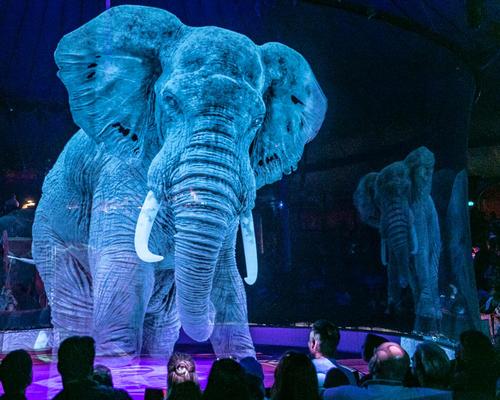04 Oct 2019
Roncalli holographic circus show satisfies desire for 'something new'
BY Andy Knaggs

Sometimes public opinion, technological development and entrepreneurial spirit all align, and all three seem to have played their part in the decision by German entertainer Circus Roncalli to replace live animal acts with holographic projections of performing horses and elephants.
"Times change and so do opinions – the audience is our boss and when you feel the audience does not approve of something, you have to change it," said Roncalli founder Bernhard Paul, speaking to Attractions Management. "As a circus director you have to listen to the audience, but also to your heart, and to trust your own gut. I was sure and focused on giving our audience something new."
The idea for that something new seems to have germinated in Paul's mind while watching the 2018 NFL Superbowl.
"I had the wish to make something new at the circus, and when I saw Justin Timberlake performing with a hologram of Prince during the Superbowl, I was so impressed with the technology that I wanted to give it a go," he said.
The solution put in place was created by blueBox, which has a background of blending holography and mixed reality, and creative agency Tag/Traum, using 11 Optoma laser projectors. A team of 15 3D designers and software engineers created the new show, called Storyteller, which saw Circus Roncalli become the first circus in the world to use holographic animals.
Things were moving in this direction anyway, it seems. Paul revealed that in a 2018 visitor survey by the circus, horses came bottom of the list of attractions that people wanted to see, with just 2.7 per cent saying they expected this as part of the Roncalli experience.
The reaction to the decision has been overwhelmingly positive, with 95 per cent positive feedback in the more than 20,000 letters and emails received by the circus following the announcement.
The move has been a PR and social media triumph, with global recognition and a boom in ticket sales. It's also changed the way the entire operation runs. With no animals to transport and care for, the circus can travel to a greater number of destinations, and no longer needs to pay for the upkeep of the animals. Of course, there has been a cost incurred in developing the holographic show and ongoing investment required to keep the technology up to scratch. Paul says that, in any case, saving money was never the driver for the decision.
"We're the pioneers and we still have many ideas," said Paul. "We want to lead the way outside of the ring. For example, being the first circus to go plastic-free."
To hear more from Bernhard Paul, see the latest issue of Attractions Management available now.
Close Window